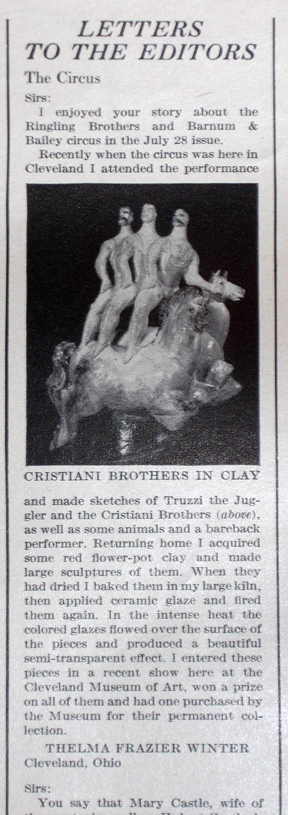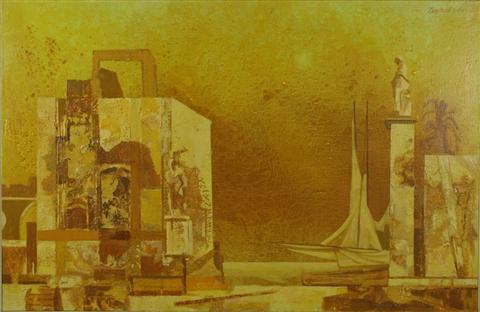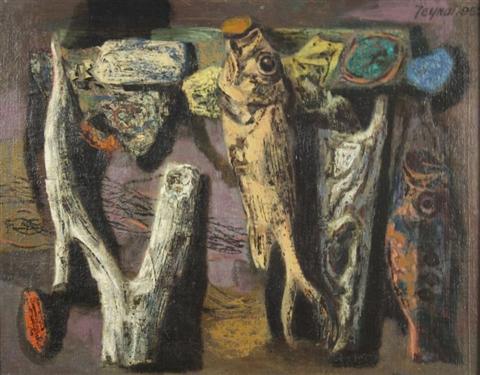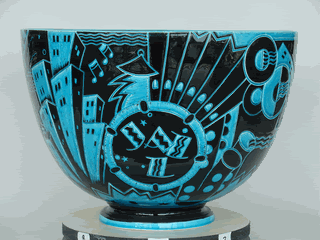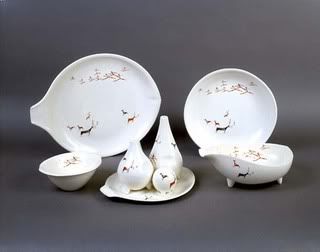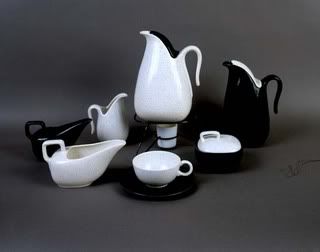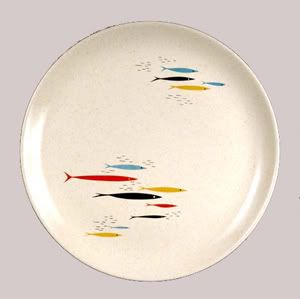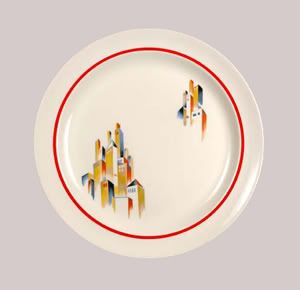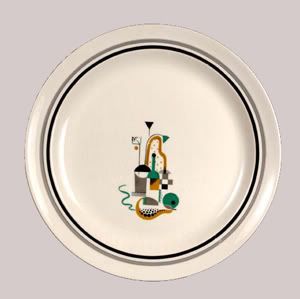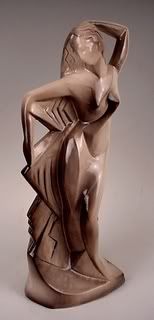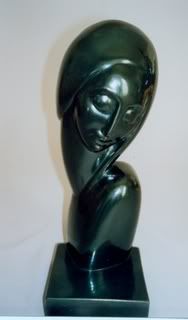1.31.2010
1.26.2010
Okey's Birds


Okey John Canfield, a coal miner, factory worker, outdoorsman and gunsmith, settled in Revenna, Ohio after obtaining a job at the Revenna Arsenal. Soon after he began carving birds, mostly from found objects. Having been a hunter, Okey focused his work on domestic species, but also enjoyed carving penguins, parrots, whooping cranes and occasionally a non-avian creature.
The salvaged materials that make up Okey’s sculptures had to be just right for use, such as the inner wood of a cedar telephone pole, which was often used for the bodies of larger species such as eagles. The wood, being seasoned, would carve easily and not split. Additionally, he used dowels for legs, and pine needles for talons.
Pictured above: Eagle and Chicken
John Teyral
An acclaimed Cleveland artist, John Teyral exhibited works nation wide and won awards throughout his career in the arts. Russian born, his family emigrated to Lakewood, an inner ring suburb of Cleveland, when he was only one year old. He took to the arts at a young age and won an award to study at the Cleveland Museum of Art. After graduating from the Cleveland Institute of Art in 1934, he acquired the Agnes Gund scholarship to study at the Boston Museum School of Fine Arts.
Through grants, Teyral studied further in Paris and Italy, then returning to Cleveland to teach advanced painting at the Cleveland Institute of Art for 40 years.
Pictured above is Untitled, and Still Life with Fish
4.15.2007
Schreckengost Plate Stolen
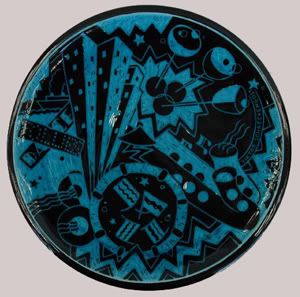
The plate, part of the "Jazz Series," was designed for the Cowan Pottery studio as part of an 11 piece set. The first of which was a punch bowl entitled "New Year's Eve in New York City." The bowl was commissioned for a party, unknown to Schreckengost, by Eleleanor Roosevelt, wife of the governor of New York, Franklin Roosevelt. She enjoyed the bowl so much that she ordered two more in preparation for her husband's Presidential election.
The service plates were later added, with only a few examples selling.
For more information on the "Jazz Series," please visit thejazzseries.com.
3.12.2007
Viktor Schreckengost: The Art of Dining
Dinner, a celebration of food that, whether formal or informal, has shaped social events and family interaction for centuries. With that, dinnerware is not just a tool to serve, but an art that sets mood for a meal. It gives character to a meal.
Viktor Schreckengost, a celebrated Cleveland artist, spent a good deal of his career working in ceramics with innovative achievements in the industry of dinnerware. While attending the Cleveland School of Art, he was offered a position at the Cowan Pottery Studio where he produced one of the most recognizable works of his career. He was commissioned by Eleanor Roosevelt to design punch bowls for a party in New York City. With the city in mind, he felt that the work needed to reflect the energy and excitement of jazz music.
After Cowan Pottery closed in 1932, Viktor was hired by the American Limoges China Company to design new shapes. His work was at first thought to be too modern for their customers, but with modifications, two "Americana," and "Diana" were introduced with great success bringing new life to the company. He later designed shapes entitled "Manhattan," "Snowflake," and "Triumph." All of which he adorned with modern graphic as well as more traditional decorations.
In the mid-1930's, Viktor began producing work for the Salem China Company, taking over as Chief Designer in 1946. He produced many innovative shapes with modern flair. "Constellation," Flair," and "Ranchstyle" were all produced around the same time, and with similar shapes and glazes, they were often used interchangeably.
Perhaps the most sought after shape of his dinnerware career is "Free Form." Completely abstract, the pieces were shaped individually with their use in mind and pulled together through scarce repetitive detail, like the tripod feet, and decoration. The teacup in this set was patented as being dripless. The tripod feet on the piece could not retain enough fluid to allow for dripping when lifted from a damp saucer.
Viktor Schreckengost gave thought to his designs in dinnerware. He helped modernize American tables nation wide and set a new example of ingenuity in the industry. More information and examples of his work can be found on the Viktor Schreckengost Foundation website.
2.08.2007
Cowan Pottery: Industrial Art
Cleveland's industrial growth highly influenced the arts in the area, as well as promoting art pottery as a valid art form. R. Guy Cowan ran the Cowan Pottery studio from 1912-1931. It was originally opened in Lakewood, but later moved to Rocky River after World War I when he found that his gas well had been depleted.
The studio was home to a number of Cleveland artists. Many of them went on to become well known figures in local and national art, including Waylande Gregory, Viktor Schreckengost, and Edris Eckhardt.
The work that came from Cowan Pottery could be found in finer department stores and galleries in many major cities including New York, Chicago, Philadelphia, Pittsburgh, as well as Cleveland. Innovative modern shapes were "tested" at trade shows with favorable reviews before new shapes were released for consumers. Cowan was one of the first to produce rectilinear wares and modernistic ceramic sculptures. Mass producing these works made the designs affordable to consumers, and effected consumer taste.
Cowan Pottery has become very collectible and can still be found in many antique stores.
To learn more about Cowan Pottery visit the Cowan Pottery Museum at the Rocky River Public Library, or visit the Cowan Pottery Museum Associates website.
Pictured above is Burlesque Dancer: Waylande Gregory (left), Giulia: A. Drexler Jacobson (right)
12.03.2006
The Western Reserve
Being settled by a New England state gave the region a rich and unique culture that differs from other areas in Ohio. There is a rich history of art and design that has been and is being produced in Northeast Ohio and this will be an attempt to examine and inform.
